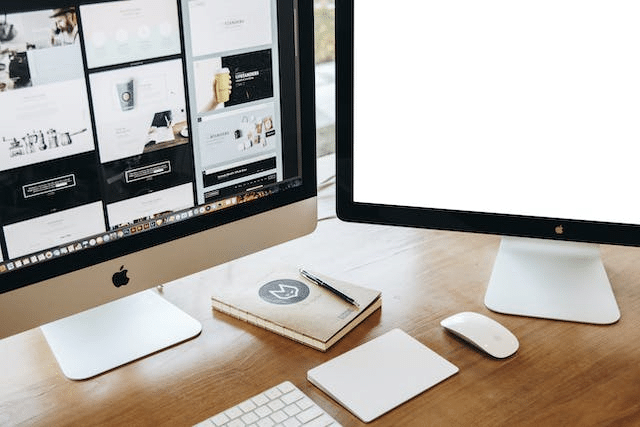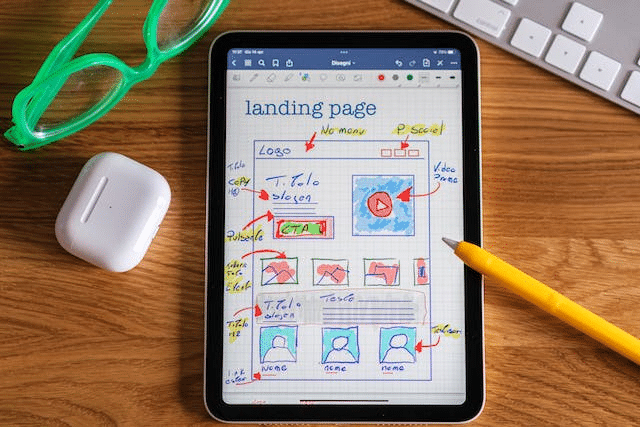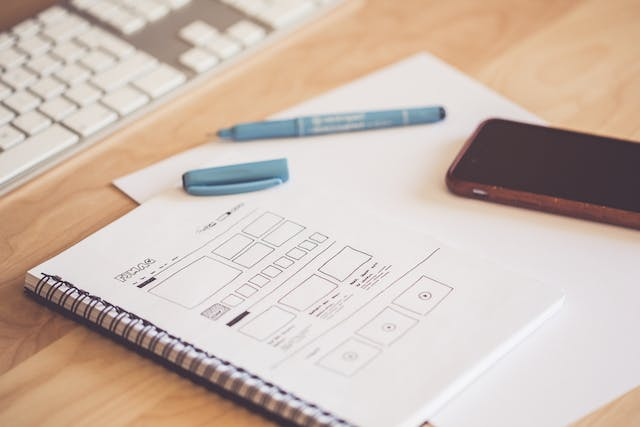
With the digital landscape becoming more pivotal to business success, a well-crafted website is not just a luxury—it’s a necessity.
In New Zealand, where the online market is as competitive as ever, finding the right web designer can set the foundation for your online presence.
This article will guide you through the journey of finding a web designer in New Zealand who can turn your virtual dreams into a reality.
So let’s get started.
Understanding Your Needs

Before diving into the marketplace to select a web designer, it’s critical to conduct some introspection about what you need from your website. This step lays the groundwork and makes sure that the end product matches your vision and objectives.
1) Defining the Scope of Your Project
First, determine the scale and complexity of your project. Are you looking to create an online store with hundreds of products, a simple portfolio to showcase your work, or a more intricate website that requires custom coding for unique features?
Understanding the scope will guide you in choosing a designer with the appropriate skills and experience.
2) Identifying Your Style Preferences and Functionality Requirements
Consider the look and feel you want for your site. Are you drawn to minimalist design, or do you prefer something bold and colourful? Will your site need special features such as interactive elements, multimedia integration, or a booking system?
Make a list of websites you admire, and note what stands out about their design and functionality. This will help you communicate your aesthetic and functional preferences to prospective designers.
3) Budget Considerations
The price of web design services can vary widely. Factors influencing price include:
The designer’s experience.
The complexity of the site.
The time frame in which it needs to be completed.
In New Zealand, prices can also reflect the local market and cost of living. Determine your budget beforehand. But be prepared to adjust it once you have a better understanding of what your specific needs entail.
By clearly understanding the scope, style, functionality, and budget for your web design project, you can approach designers confidently and clearly, ensuring that the quotes and proposals you receive are as accurate and tailored to your requirements as possible.
Researching Potential Web Designers

Once you have a firm grasp of what you need for your web project, the next step is to find the right talent to bring your vision to life.
Researching potential web designers involves knowing where to look and what to look for. This ensures that you get a good match between your project requirements and the designer’s expertise.
Local vs. Remote Designers: Pros and Cons
When considering where your web designer should be based, there are several factors to weigh. Local designers in New Zealand might offer the advantage of personal interaction. They also have an understanding of the local market and culture, which can be beneficial if your target audience is primarily in New Zealand.
Face-to-face meetings can also foster a strong working relationship and facilitate clear communication. However, they might come at a higher cost due to the local economic conditions.
On the other hand, remote designers can be more cost-effective and open doors to a wider range of talents. The cons here include potential challenges with time zone differences. You may also lack personal interaction, which could affect the project flow.
Leveraging Online Portfolios and Design Communities
A strong online presence indicates a web designer’s capabilities. Reviewing a designer’s portfolio gives you insight into their aesthetic sense, versatility, and technical skills.
Look for designers whose online portfolios showcase a range of styles and include websites that are similar to the one you want to create. Design communities like Behance, Dribble, or Awards can be excellent sources to discover top talent and view their work.
Using New Zealand-based Web Design Directories and Professional Networks

Utilising local directories can streamline your search for a New Zealand-based designer. These directories often provide listings of reputable professionals along with their portfolios and contact information.
Local professional networks, LinkedIn groups, or associations like the Designers Institute of New Zealand can also be invaluable resources. They not only list member designers but also promote networking events and showcases where you can meet designers personally.
By considering the benefits of local and remote designers, tapping into the wealth of online portfolios, and utilising New Zealand-specific resources, you can compile a list of potential web designers well-suited to your project’s needs.
This strategic approach to researching potential candidates will save you time in the long run. It will also increase the chances of finding the ideal match for your web design project.
Evaluating Web Designers

Evaluating potential web designers is a critical step in the selection process. This phase is not just about liking a designer’s style. It’s also about ensuring they have the right skills, understanding their approach to projects, and gauging how well they can translate your requirements into a functional and aesthetically pleasing website.
1) Reading Client Testimonials and Reviews
Client feedback is a valuable resource when assessing potential web designers. Testimonials and reviews often provide insight into a designer’s reliability, ability to meet deadlines, and the quality of their customer service.
Look for comments on how well the designer communicated throughout the project and handled any issues that arose. Google Business reviews, LinkedIn recommendations, and even comments on their social media platforms can be revealing.
2)Assessing Their Previous Work for Quality and Relevance
Take the time to thoroughly review the designers’ portfolios. Look for quality in terms of design principles such as balance, contrast, and usability.
Check if their websites are responsive and work across different devices and browsers. You might come across small business web designs with really high ratings. It’s probably because the designer was talented. Don’t hesitate to look into that.
Relevance is equally essential; the designer should have experience in your industry or in creating the type of website you need. If possible, visit the live websites they have built to get a feel for their work in action.
3) Understanding Their Design Process and Communication Style

Understanding how website designer approaches their work will help you anticipate what working with them will be like. Experienced designers should have a clear, structured process from conceptualisation to launch.
They should be able to explain to you, in understandable terms, each phase of the design process and how they will involve you along the way. Additionally, assess their communication style. Does it align with your preferences for updates and feedback? Reliable communication is key to a successful web design project.
As you evaluate potential web designers, it’s important to remember that this is a collaborative relationship. You want someone who is not just talented but is also a good fit for your working style and business philosophy.
Pay attention to both the subjective aspects (like design style and personal rapport) and objective criteria (such as professionalism, technical expertise, and the ability to deliver on time) when making your decision.
This thorough evaluation will lead you to a web designer who can deliver a final result that meets your expectations and business goals.
What Skills Should A Good Web Designer Have?

When looking for a good web designer, you should be on the lookout for a blend of both technical prowess and creative acumen.
Here’s a rundown of the key skills that a competent web designer should possess:
1) Understanding of Basic Design Principles
A good web designer should have a firm grasp of design principles such as balance, contrast, emphasis, consistency, and unity. They should know how to use space effectively and create a clean layout that guides the user’s eye across the page.
2) Proficiency in Web Design Software
Familiarity with industry-standard design software is essential. This includes graphic design applications (e.g., Adobe Photoshop, Illustrator) and web development platforms (e.g., Adobe Dreamweaver). They should also be skilled in prototyping tools like Sketch or Figma.
3) Knowledge of Web Development Languages
While not always necessary for a designer, having a basic understanding of languages such as HTML, CSS, and JavaScript can be highly beneficial. This knowledge allows them to understand what is technically feasible and to communicate more effectively with developers.
4) Responsive Design Skills

With the variety of devices available today, a good web designer must know how to create designs that look great and function well on all devices, ensuring a consistent user experience across different screen sizes. A responsive web design is essential for the success of your business.
5) User Experience (UX) Design
Understanding user behaviour and designing for a positive user experience is crucial. This includes creating easy-to-navigate websites, optimising page loading times, and ensuring content is accessible and readable.
6) User Interface (UI) Design
They should be adept at designing intuitive interfaces that enhance user interaction. The UI design encompasses the layout of information, the colour scheme, the flow of various elements, and the overall aesthetic. A good design will help you in the marketing campaigns of your business.
7) Search Engine Optimisation (SEO) Knowledge

A good web designer should understand the basics of SEO. That’s the only way they can make sure that the websites they are designing are optimised for search engines, which involves proper headings, image alt attributes, and other on-page SEO best practices.
8) Content Management System (CMS) Experience
Familiarity with CMSs like WordPress, Joomla, or Drupal can be a significant advantage, as many websites are built on these platforms for ease of content updates and management.
10) Project Management Abilities
They should have strong organisational skills. Plus, they should also have the ability to manage multiple projects with varying deadlines. Being able to manage time effectively and work within timelines is key.
11) Communication Skills
Clear and effective communication is just as important. They need to understand your goals, convey their ideas, and explain technical concepts in layman’s terms.
12) Problem-Solving Skills
Web design can come with its share of challenges and unforeseen issues. A good designer should be able to think critically and offer solutions when problems arise.
13) Continual Learning

Web design is an ever-evolving field. A dedicated web designer must be committed to learning and adapting to new design trends, tools, and best practices.
14) Attention to Detail
Finally, a meticulous approach to work, ensuring every pixel is in place, can make the difference between a good website and a great one.
These skills ensure that a web designer can take a holistic approach to web design, creating aesthetically pleasing layouts that offer excellent user experiences, rank well in search engines, and achieve the strategic goals of your online presence.
How Much Should You Pay For A Good Web Designer?

The cost of hiring a good web designer can vary greatly depending on several factors, including
The complexity of your project
The experience of the designer
The geographic location.
In New Zealand, as with anywhere else, you’ll find various prices from freelance designers to professional website agencies.
Here’s what you should consider when budgeting for a web designer:
Project Scope: The complexity and size of your website will greatly influence the cost. A simple brochure website will cost considerably less than an intricate e-commerce platform with custom functionalities.
Experience and Expertise: An experienced web designer or reputable web design agency will tend to charge higher rates. Their expertise, however, can result in a higher quality website that delivers better results in terms of user experience and conversions.
Design Customisation: If you need a fully customised website, you should expect to pay more than you would for a template-based design. Custom designs require more time and skill to create. Most web designers charge more for customisation.
Additional Services: Web design encompasses more than just the look of the website. Suppose you need additional services such as content creation, SEO, or the integration of third-party systems for online success. In that case, these will add to the overall cost.
Ongoing Maintenance: Aside from the initial design and development costs, consider whether you’ll need ongoing maintenance. Some designers offer maintenance packages at a monthly rate, while others may charge on an as-needed basis.
Market Rates: In New Zealand, website design services can range from around $1,000 for a basic site by a junior designer or freelancer to $10,000 or more for a comprehensive website designed by a seasoned professional or an agency. High-end agencies that deliver strategic design and digital marketing services can charge upwards of $20,000 to $50,000 for large-scale projects.
Value over Cost: While budget is necessary, the cheapest option may not always offer the best value. Consider the potential return on investment that a professional, well-designed website can bring to your business. Many web designers provide value for money. You just have to find them.

To get the best idea of how much you should pay for a web designer in New Zealand, it’s advisable to:
Get Multiple Quotes: Approach several web designers or agencies to discuss your needs and obtain detailed quotes.
Understand What’s Included: Make sure you are clear on what the quote includes. Does it cover design only, or does it include development, content, and hosting?
Look at Past Work: Evaluate the designers’ portfolios to see if their quality of work aligns with their pricing.
Check Reviews and Testimonials: Look for feedback from past clients to gauge their satisfaction with the services received relative to the price paid.
Ultimately, investing in a good web designer is investing in your business’s online presence and, potentially, its success. Balancing your budget with the quality of work and potential long-term benefits will guide you to make an informed decision on how much to pay for a web designer.
Making the Decision

Once you have all proposals and quotes, compare them not just on price but on the value each web designer can provide. Ensure you have a clear understanding of the terms of service, deliverables, and the project timeline.
The decision should be a balance of professionalism, skill, cost, and your comfort level with the designer.
Reaching Out and Making Contact

When you’re ready to reach out, draft a clear and concise brief of your project. Be specific about what you’re looking for and what your expectations are regarding timelines and budget.
A good practice is to schedule a call or a face-to-face meeting, allowing you to get a sense of the designer’s professionalism and establish rapport.
Legal and Contractual Considerations

When hiring a web design company in New Zealand or anywhere else, it’s essential to understand the legal and contractual obligations involved. This understanding will protect your interests, outline expectations, and establish a formal agreement that reduces the potential for disputes.
Intellectual Property Rights
One of the first legal aspects to address is who will own the intellectual property (IP) of the website’s design. Typically, unless otherwise stated, the creator (the web designer) will own the IP rights to the design.
Ensure that the contract clearly transfers these rights to you upon completion and payment for the project. This transfer should include all design elements and code unless agreed upon differently, like in the case of stock images or third-party software.
Confidentiality Agreements
Depending on the nature of your website, confidentiality might be a concern. If you’re sharing sensitive information with your web designer, you may want to consider a non-disclosure agreement (NDA).
This legally binding document ensures that any proprietary information you share with the designer cannot be disclosed to others.
Scope of Work and Deliverables

The contract should detail the scope of the project, including the specific tasks the designer will perform, the deliverables you expect to receive, the quality standards, and the project timeline.
Be as detailed as possible to avoid any misunderstandings about what is expected when you create websites.
Payment Terms and Schedules
Clearly lay out the payment terms, including the total cost, a payment schedule (such as initial deposit and subsequent payments at various milestones), and the conditions under which payments are made.
Clarify acceptable payment methods, and don’t forget to address how potential additional costs will be handled.
Revision and Approval Processes
Include terms about the revision process, specifying how many revisions are included in the initial price and how additional revisions will be charged. Clearly state the approval process for the completed work and what happens if you’re not satisfied with the final product.
Contingency Plans for Missed Deadlines or Discontinued Work
Establish what will happen if the web designer misses deadlines or is unable to complete the work. This could include penalties, a rework of the timeline, or the provision for you to terminate the agreement with certain rights to the work completed up to that point.
Maintenance and Support

Post-launch support is crucial for addressing any immediate issues with the website. Determine if the designer will provide maintenance services after the site is live and what the terms of those services are, including their duration and cost.
Termination Clause
This part of the contract will explain how either party can terminate the relationship and what happens in such an eventuality. This includes notice periods, work and payment up to the point of termination, and post-termination obligations.
Dispute Resolution
Outline a process for resolving disputes should they arise. This might include mediation or arbitration before any legal action can be taken. It may also specify the governing law and jurisdiction for any legal proceedings.
By taking care of these legal and contractual considerations, you create a framework within which both you and the web designer can work confidently and professionally. Always have a lawyer review the contract before you sign it. This will help you ensure that it is legally sound and that you fully understand your rights and obligations.
Conclusion

Finding the right web designer in New Zealand requires research, clear communication, and a bit of intuition.
By following the steps outlined above, you can make an informed decision that aligns with your business objectives and sets your website up for success. Creating websites is not as difficult if our find the right web designer.

